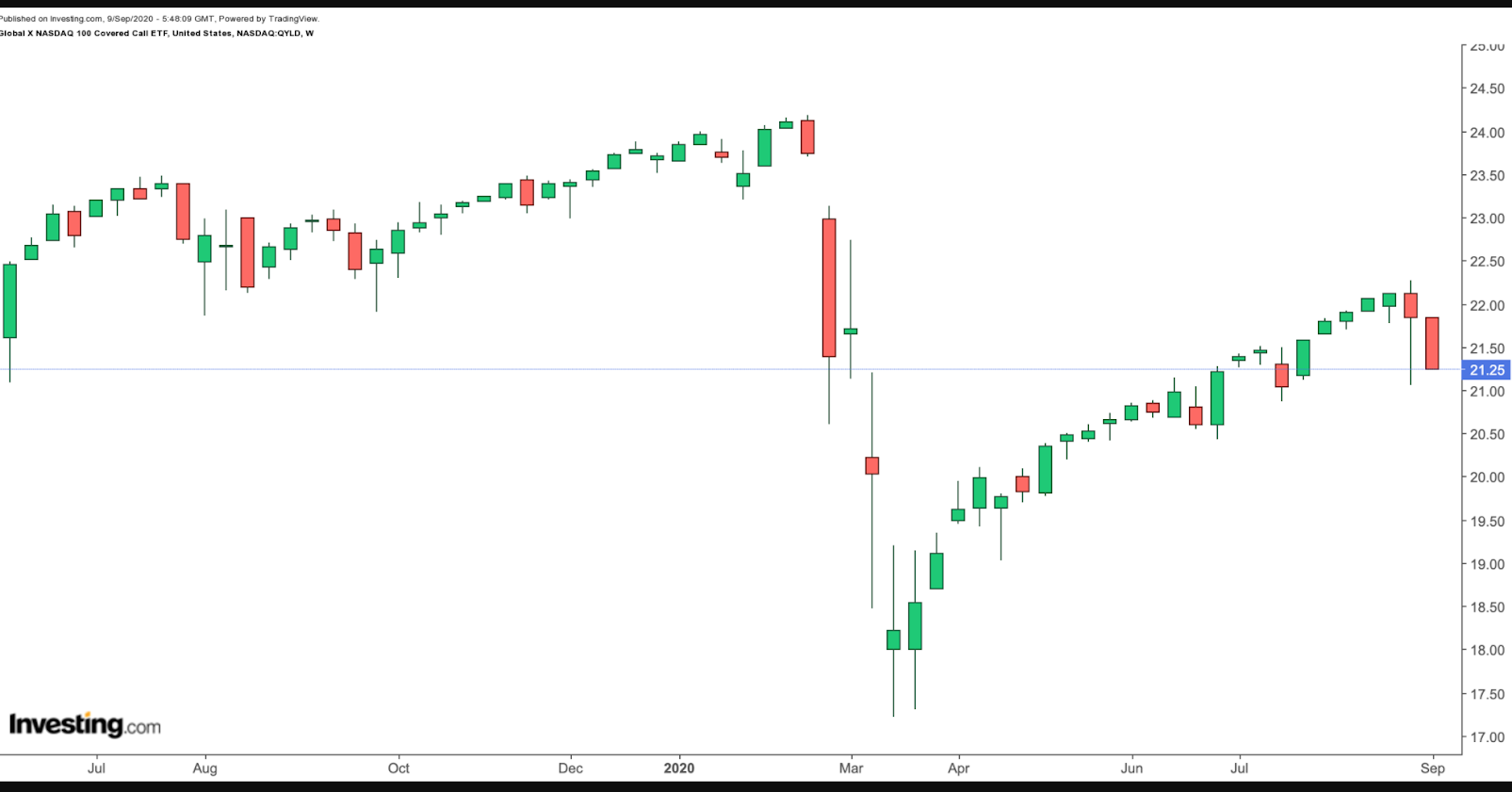As broader markets like the S&P 500 and NASDAQ have been giving up some of their recent gains, market participants are in search of stable yields. One such niche area that has been picking up interest: covered call ETFs.
Here, we'll delve into the covered call space and introduce a fund worth considering:
Dynamics Of Call Options
Although defining various options strategies with call and put options is beyond this article's scope, it'd be essential to appreciate the basics of a call option. In this post, we'll address equities and index options.
A "call option," or "call" is a contract between the buyer (owner) and the seller (writer) of an option. It provides the owner the right to buy a stock—or another underlying asset—at a specified price during a fixed period stipulated in the option contract.
Options are only good for a set period, so the buyer has the right, but not the obligation, to buy (or "call away") an agreed quantity of an underlying stock at the strike price from the option writer until the expiration date.
Single stock options can have a range of expiry dates. The most common is the monthly-expiry on the third Friday of a given month, but many have weekly options that expire each Friday. The further the date goes out in time, the more an option would typically be worth. Unlike index options, single stock options can be exercised before expiry.
Option buyers have to pay a certain amount of "premium'' to option writers, so sellers are typically motivated by this premium or income.
What Is A Covered Call?
One option contract typically represents 100 shares of a given stock. If the writer owns the underlying security or part of it (has a long position), the call option is called a ''covered call.'' To run a covered call strategy, an investor must own 100 shares for every call contract s/he plans to sell.
If the investor simultaneously buys 100 shares of a stock and writes a call option against that stock position, it is known as a "buy-write" transaction.
When an investor writes a covered call, that investor sells someone else the right to purchase 100 shares of the stock that the investor already owns, at a specific price, within a specified timeframe.
Put another way, a covered call is a hedged strategy as the writer is in a position to deliver the stock if it is called.
NASDAQ 100 Covered Call ETF
- Current Price: $21.25
- 52-Week Range: $17.22 - 24.18
- 30-Day Sec Yield: 0.28%
- Distribution Yield (12-Month Trailing): 11.38%
- Net Expense Ratio: 0.60 % per year, or $60 on a $10,000 investment
The NASDAQ 100 Covered Call ETF (NASDAQ:QYLD) follows a “covered call” or “buy-write” strategy, whereby it buys all the stocks in the NASDAQ 100, an index previously covered. QYLD “writes” or “sells” monthly at-the-money index call options.

Single stock options and index options have several differences, which the fund’s management highlights. Unlike single stock options that can be exercised at any time, index options cannot be called/exercised early. They are also settled in cash, not in delivering the underlying index holdings.
Since index options cannot be called early, where the index finishes the month is the most important thing for an investor. All the price swings that may happen throughout the month are irrelevant.
QYLD, which includes 104 holdings, tracks the CBOE NASDAQ 100 BuyWrite index. The top ten holdings comprise around 58% of the total net assets, which are around $1.3 billion. Its top five companies are Apple (NASDAQ:AAPL), Amazon.com (NASDAQ:AMZN), Microsoft (NASDAQ:MSFT), Facebook (NASDAQ:FB) and Alphabet (NASDAQ:GOOGL), (NASDAQ:GOOG).
Year-to-date, the NASDAQ 100 index and Invesco QQQ Trust (NASDAQ:QQQ) are up over 30% and 33% respectively.
However, QYLD, which invests in the same securities as QQQ, but then sells covered call options on the entirety of the holdings, is down about 8% YTD.
QYLD's 12-month distribution yield stands at 11.38% and this is the yield an investor would have typically received if they held the fund over that period. The fund makes payments monthly. When an ETF, such as QYLD, sells a call option, it collects a premium from the option buyer. It's these premiums that allow the fund to pay out additional income.
At the end of the month, QYLD seeks to distribute a portion of the income from writing/selling the NDX index option to the ETF shareholders and at the beginning of each new month, this process is repeated.
Thus the premium provides income in sideways markets and offers limited protection in declining markets.
However, investors should note that covered calls limit an ETF's gains in a rising market. For example, although the NASDAQ 100 index has gone up about 41.32% over the last 12 months, QYLD investors saw a 11.38% yield during that period.
The calls written every month have by definition capped the returns. With covered call ETFs, in exchange for receiving the premium now, investors give up potential upside later, a fact highlighted in the fund's prospectus. QYLD has given up the profit potential in the months the index has risen above the strike price of the index call option.
Bottom Line
Like any other asset class or fund, the risk/return profile offered by QYLD or any other covered call ETF may not be appropriate for all investors. However, they are likely to be of interest to retirees and income investors, who may be ready to sacrifice upside potential in exchange for more regular monthly distributions.
Market participants may want to talk with a financial advisor to get a more in-depth understanding of the mechanics of such funds. For US-based investors, there are also likely to be tax consequences of writing call options.
